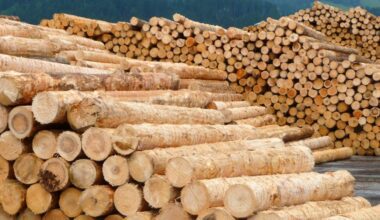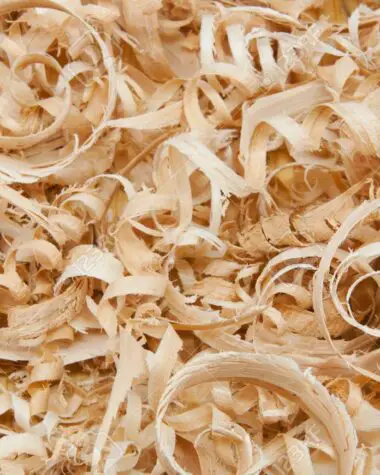One of the planet’s most exquisite and resilient traditional architectural styles may be found on the Korean Peninsula. Each hanok, or traditional Korean building, is a meticulously constructed masterwork that contrasts stark simplicity with elaborate embellishment and is built to last for generations. But who builds these houses, and how does a hanok come together? Read on to find out more.
Did You Know?
In the ancient Korean dynasty, Daemokjangs or carpenters were hired as officials in the government seat. For instance, 60 Daemokjangs were officials belonging to Seongonggam, translated as the Office of Civil Engineering and Building Repair. Furthermore, the writings from the reign of King Sejong (r. 1418 – 1450) called Records of Renovation of Sungnyemun Gate (also called Namdaemun) reveal that they were Grade-5 officials. This Korean civil service system means they possess power and discretion to make policy-related decisions and implementation.
Nevertheless, toward the end of the Joseon Period, the custom of hiring Daemokjangs as government officials reached its end. These days, only a few specific fields, such as the construction of private homes or temples uses Daemokjang techniques. Daemokjang firmly passes down its skills. It is revered as the supreme authority figure among carpenters and plays a key role in adopting new techniques.
Who Is The Daemokjang?
The word “Daemokjang” refers to traditional wooden architecture in Korea and, more specifically, to the woodworkers who use this method. Traditionally, Korean craftsmen who work with wood are broadly referred to as Mokjangs. In other words, Mokjang is the most general term for an artisan skillful in dealing with wood.
However, we need to understand the origin of the word Korean used to refer to their woodworkers. Daemokjang and Somokjang provide a better understanding of Korean wooden buildings by raising awareness of the responsibilities and abilities of the craftsmen involved in traditional Korean woodwork. Daemok and somok are the two main divisions that classify traditional Korean woodwork.
The scale of the finished product is the fundamental distinction between these two types of Korean carpentry. The term “daemok” is more explicitly used to describe larger carpentry tasks, such as the construction of palaces, temples, or houses. Meanwhile, “somok” denotes smaller construction tasks often involving furniture building, such as wardrobes, chests, tables, doors, railings, and other items.
In a nutshell, Somokjangs are master craftsmen in charge of small-scale wooden projects. Daemokjangs are in charge of large-scale constructions. They not only participate in the building process but also supervise and advise the rest of the craftsmen, such as the repairers, the tile makers, the masons, the ornamental painters, and the plasterers.
Daemokjangs are responsible for the framework of the buildings, including columns, rafters, beams, angle rafters, bracket systems, and lintel, to name a few. In short, Daemokjangs are both architects and carpenters involved in large-scale wooden constructions.
Becoming a Daemokjang requires tremendous patience, a love for working with wood, and working with people. It takes decades of gaining extensive knowledge combined with field expertise before one can call himself a Daemokjang. Without the use of heavy machinery, Daemokjangs managed to create some of the most extraordinary buildings in the history of mankind.
UNESCO and the extensive wood knowledge of Daemokjang
The inscription of Daemokjang as part of UNESCO’s list of Intangible Cultural Heritage of Humanity identifies both the traditional Korean architecture and the masterminds behind the construction process of the emblematic buildings for bringing value that extends far beyond the country of Korea alone. Furthermore, Daemokjangs are praised for representing the essence of Korean identity and philosophy of life.
Daemokjang’s wooden projects are distinctive for their smoothness and simplicity. This traditional working method calls for technical expertise to plan the structure while considering its size, location, purpose, and aesthetic sensibility.
These factors are essential in choosing the lumber for the building materials, cutting and shaping the wood, and assembling and interlocking the separate wooden pieces without using nails, creating what is known as “joints that withstand a millennium.”
It takes decades of schooling and practical experience to grasp the knowledge of Daemokjang, which has been passed down from generation to generation. Daemokjang practitioners reimagine the beauty of historic architecture with their creative imagination and recreate it with their technical skills as they work to restore massive buildings using traditional methods.
The Musical Work of Ground Hardening to Timber Framing
As wood construction in Korean culture required extensive effort, Koreans traditionally sang energizing songs to make the process more joyful for the artisans involved. Not only did the songs energize the workers, but they also helped them to work in unison.
Every building’s construction starts with a solid foundation, and traditional Korean architecture is no different. Before the building process, it had to be thoroughly cleaned and established to become hard. For this purpose, heavy rocks or lumber had to be stomped down.
Keeping in mind the non-use of iron nails, the wooden pieces had to fit perfectly together, and even minor mistakes could spell disaster for the durability and stability of the buildings. Thus, singing a song like the Ground-hardening Song let them do the task with enjoyment amidst the hardships. The mentioned song was passed down in Paju-gun County, located in Gyeonggi Province. Chu Gyo-jeon sang it.
After laying the foundation, Daemokjangs started shaving the wood to make it smooth. Mareumjil is the name of the technique used to cut, shave, and shape wood for construction materials. The Daemokjang would draw lines on the smooth surface per his predetermined plans once the bark had been removed. The carpenters proceed with cutting and designing the lumber based on these lines.
Master carpenters thoroughly examined each characteristic of wood type. As a result, they understood the proper type of wood required to suit a building’s purpose and natural surroundings. Daemokjangs created life-size architectural renderings depicting the elaborate ornamentation on the pieces of lumber. The group of professionals would next precisely carve the lumber under their drawings.
Daemokjangs’ Traditional Pillars
Pillars were designed in several distinct styles, the Minheullim style, and the Baeheulliim style.
- Minheullim-style pillars were wider at the base while narrower at the top.
- Baeheulliim-style pillars were shaped at 1/3 point from the bottom and are the thickest. Both of these styles allowed the pillars to be smooth and curvy, enhancing the architecture’s beauty.
There were special ceremonies held on the day the pillars were erected. Daemokjangs hold a ritual ceremony to obtain the divine blessings and protection of Seongju, the guardian spirit in the buildings. They do the ceremony with the owners of traditional Korean homes, the royal families and officials in the case of a temple or palace, as well as the crew of carpenters.
Meanwhile, the pillars needed to verify whether they would stand upright, traditionally called Darimbogi. The Daemokjang can only make sure that the pillars would be able to stand upright if both the major and the minor access of the pillars are in parallel with the straight lines drawn on the pillars in advance. Once the pillars are estimated to be able to stand upright and straight, it is time to fit them onto the foundation stones.
To do this, the Daemokjang performs a process known as Geurengi-tteugi, which ensures no space between the bottom of the pillars and the foundation stones. The pillars that cross the Geurengi-tteugi are placed out on the ground for chiseling after being determined to be firmly attached to the stones. The pillars are once more fitted onto the foundation stones after having their bottoms carved.
Gwisoseum is an arrangement of pillars in which the outer pillars on each side are marginally longer than the central pillars. Daemokjangs avoid the appearance of both edges lowering by placing pillars in the Gwisoseum style. For this design to work, a highly sophisticated technology must be used to determine the exact dimensions of the beams above the pillars.
Daemokjangs connect the header beam, known as Changbang, with decorative brackets, known as Heocheomocha, once the pillars have been constructed. The header beams, which connect each pillar and are necessary to support the roof, must be sturdy and large.
Brackets fall into three major categories: Jusimpo, Dapo, and Ikgong.
- Jusimpo refers to brackets with a decorative cluster placed on each pillar.
- Dapo refers to much more complicated and magnificent brackets of decorative clusters placed on top of each pillar and between the pillars.
- Ikgong refers specifically to wing-shaped bracket arms.
The Bottom Line
In the past, Daemokjangs were among the most revered people in Korean history. They were regarded as the most esteemed, highest-class carpenters because they were in charge of planning and building palaces and fortresses. The traditional timber framing of Korea is a wood fact and legacy that serves as both a piece of living history and an invisible link that transmits the values of the older generations to the young people who will carry on the ancient traditions of art and craftsmanship.








